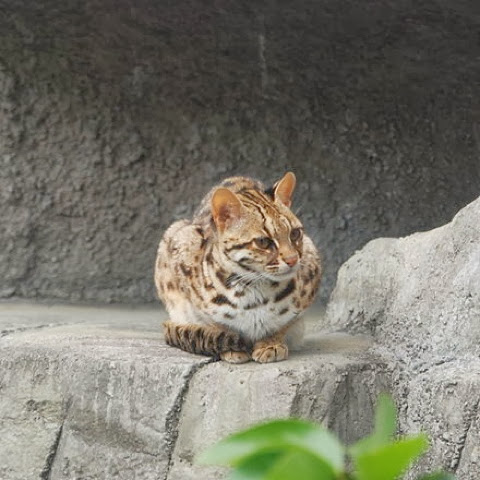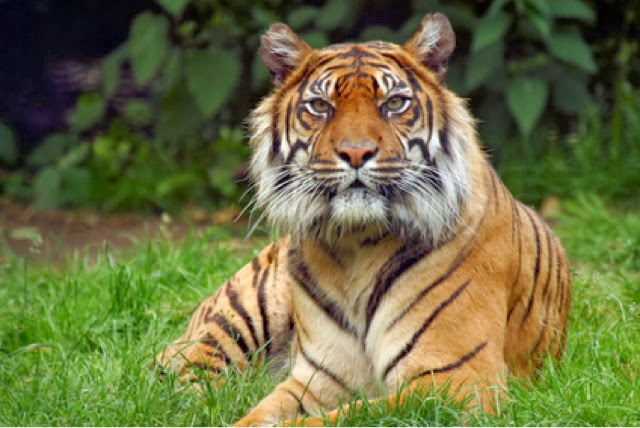Tigers are the most powerful of the big cats. They have an orange coat with black stripes which is very useful for camoflage. Their paws, front legs and jaws are very powerful and used for killing their prey. Tigers have small ears, yellow irises, and white hair around their neck. Also their stripes, like a zebras, are never the same as another tiger.
Tigers live in Southeast Asia, with a life span of 10 to 15 years. They are nocturnal, and will use the night and the reeds or long grass as camoflage when ambushing prey. Tigers are also excellent swimmers, with their strong jaws, shoulders, and legs they can carry up to 300 pounds while swimming.
Tigers are solitary cats and like to hunt alone. They can kill their prey with just a swipe of their paw or bring will it down by their weight and strangle it with their jaws clamping around their prey's neck.(Wonderful I know, just to show you how powerful they are.) They will eat a variety of animals depending on where they live. Normal prey are water buffalo, wild pigs, deer, monkeys, hares, bears, antelope, leopards, crocodiles, and pythons. Some old and injured tigers have been known to hunt humans and domestic animals, though this is usually because they just are not able to hunt what they normally hunt.
Mother tigers will have 3 to 4 cubs and live with for about 2 to 2 1/2 years. They will come out of the den at 8 weeks old.
There are only 6 out of 9 subspecies left of the tigers. They are the Bengal, Indochinese, South China, Malayan, Siberian, and Sumatran. The largest being the Siberian (about 700 Ibs) and smallest being the Sumatran ( about 300 Ibs). Bengal tigers are the most common subspecies. All species of tigers are endangered mostly due to habitat loss and poaching.
White tigers are not a different subspecies by themselves, they are tigers that have had both parents carry a rare recessive pigment gene. The dominant of this gene is the orange pigment most tigers have. White tigers are not considered albino, they still have black stripes down their back and have blue eyes. Due to the popularity of white tigers zoos have been breeding them in captivity, as they are very rare in the wild. Only a small amount of white tigers exists, leading to a small amount of tigers to chose from that have that ressesive gene. Because of this zoos have inbread white tigers. That has lead to birth defects among the tigers which include scoliosis and crossing of the eyes (strabismus). Zoos are now trying outbreading, the breeding of orange and white tigers, and are hoping for more white tigers.
Credits:
"Tiger Pictures, Information and Facts." Bigcat.com. N.p., n.d. Web. 28 Oct. 2013. <http://www.bigcat.com/tiger.aspx>.
"White Tiger." Wikipedia. Wikimedia Foundation, 28 Oct. 2013. Web. 28 Oct. 2013. <http://en.wikipedia.org/wiki/White_tiger>.























































